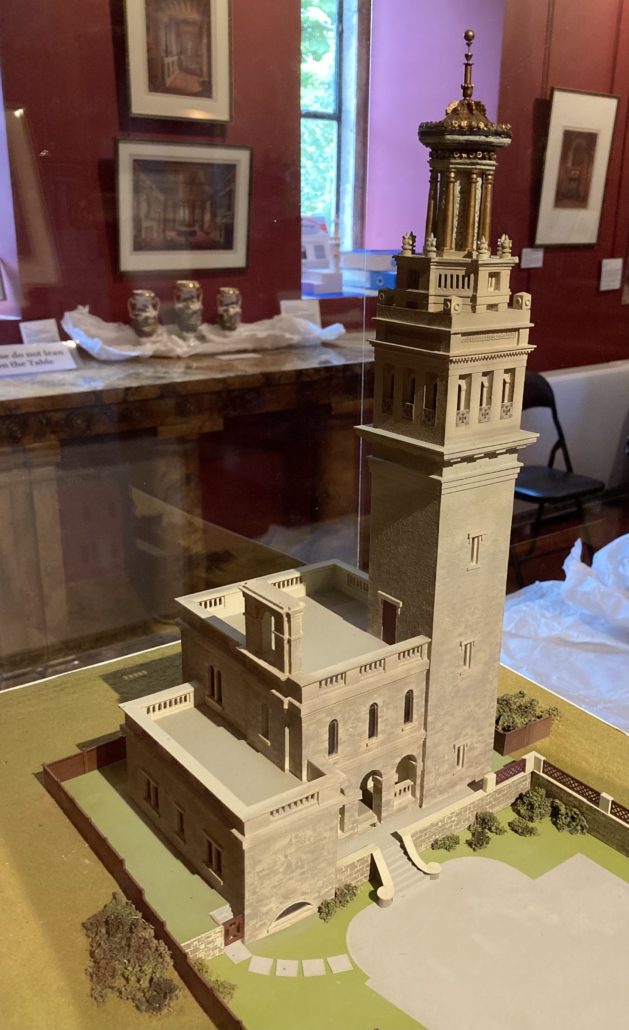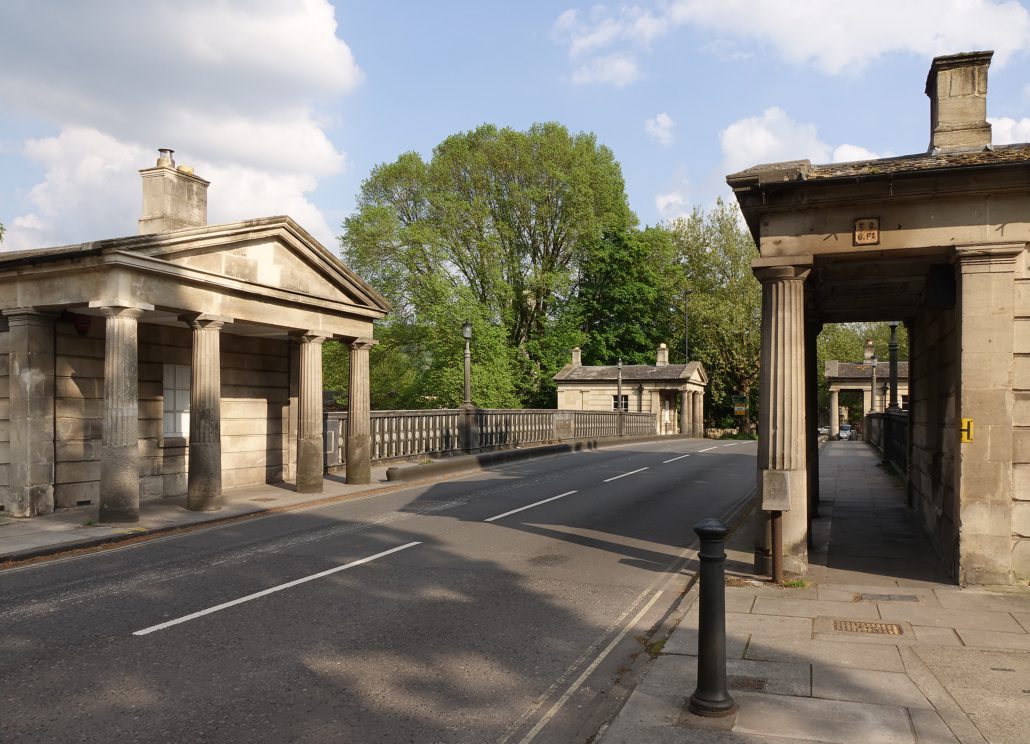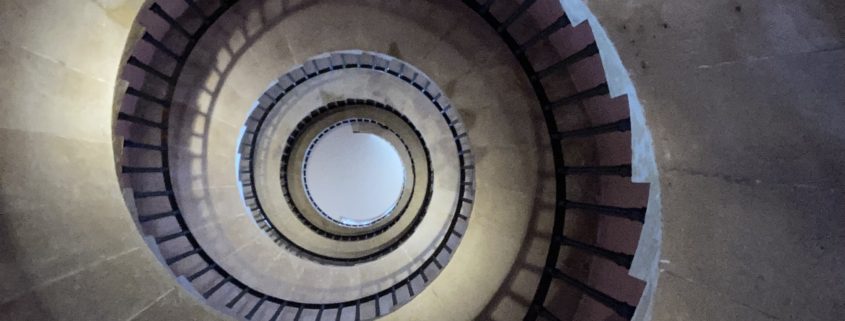Beckford’s Stairway to Heaven, to “the Finest Prospect in Europe”
Visitors from The Shaftesbury & District Historical Society were able to test out the validity of William Beckford’s assertion on their 07 June Summer Outing to Beckford’s Tower and Museum at Lansdown, Bath. From his youth Beckford had been fascinated by towers. Aged 21, he writes of the fictional Caliph Vathek : His pride arrived at its height, when having ascended, for the first time, the fifteen hundred stairs of his tower, he cast his eyes below, and beheld men not larger than ants; mountains, than shells; and cities, than beehives … he was almost ready to adore himself; till, lifting his eyes upward, he saw the stars as high above him as they appeared when he stood on the surface of the earth.
Fortunately there are only 154 steps at Lansdown. Nor, as legend had it, would Beckford have been the first in Bath to notice the collapse of the 90 metre-high central tower of Fonthill Abbey. This disaster occurred in December 1825, while the Tower at Lansdown was not completed until 1827.

Beckford had recouped the family fortune, the profits from a century of slave labour on Jamaican sugar plantations, by selling Fonthill Abbey and its contents during the first bout of Fonthill Fever in 1822. By 1827 he had acquired a mile-long corridor of land from his new base in Lansdown Crescent, to the Tower at the top of Lansdown Hill. Henry Goodridge, a young local architect, designed a neo-Classical structure in the style of an Italian villa with adjacent campanile or bell-tower, except that the crowning glory was a cast-iron and timber version of the Choragic Monument of Lysicrates in Ancient Athens. Perhaps this lantern was an afterthought, especially as Beckford felt that the Tower should have been forty feet higher. Goodridge’s enthusiasm for Greek temples is apparent in another of his Bath landmarks, Cleveland Bridge, currently the site of major roadworks. In 1826 the heaviest traffic would have been horse-drawn.

The S&DHS is indebted to Dr Amy Frost, Senior Architectural Curator of the Bath Preservation Trust, not only for a warm, entertaining and erudite reception during a truly Privileged Visit, but also for the loan of artefacts such as Michael Bishop’s model of Fonthill Abbey to Gold Hill Museum. Members were pleased to be supporting the Beckford’s Tower Appeal which, if successful, should see the Tower removed from Historic England’s Heritage At Risk Register and restore at least part of Beckford’s Ride, which included a Grotto and Tunnel beneath a public track. Urban development over two centuries makes it difficult to visualise how Beckford enjoyed a secluded natural backdrop to his morning excursions, through a landscape created and managed by his gardeners. On Saturday 11 June Gold Hill Museum hosted the AGM of the Beckford Society, whose members had the opportunity to view Secretary Sidney Blackmore’s splendid Fonthill Fever Exhibition. On Tuesday 27 September at 7.30p.m. in Shaftesbury Town Hall, Amy Frost will give the annual Teulon Porter Memorial Lecture on William Beckford After Fonthill – Building and Collecting in Bath.




